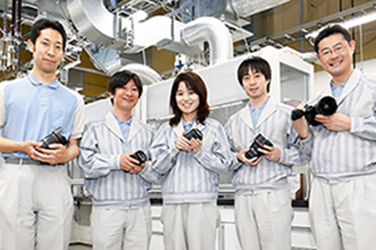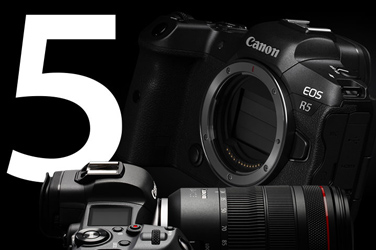Technology in ProductsInterchangeable lenses
Using different lenses in different settings allows for a wide range of visual expression
The quality of a photograph is greatly determined by how accurately light is captured by the camera. High image quality cannot be achieved without a high-quality lens that effectively manipulates light. To that end, Canon has created interchangeable lenses that allow for all manner of visual expression through careful selection of lens materials, experimenting with aspherical lens design, and fully utilizing modifications such as special coatings and processing.
January 30, 2023

How interchangeable lenses work
To take a picture with a camera, a “lens” is needed to focus light and form an image. Lenses are made of glass or plastic that refracts light and come in two types: convex and concave. Convex lenses are thicker in the center and thinner around the edges, allowing them to focus light. In contrast, concave lenses are thinner in the center and thicker on the edges to disperse light.
Read More
Canon’s interchangeable lens technologies
Canon’s interchangeable lenses continue to be preferred by photographers around the world for the advanced technologies they incorporated and their groundbreaking imaging performance.
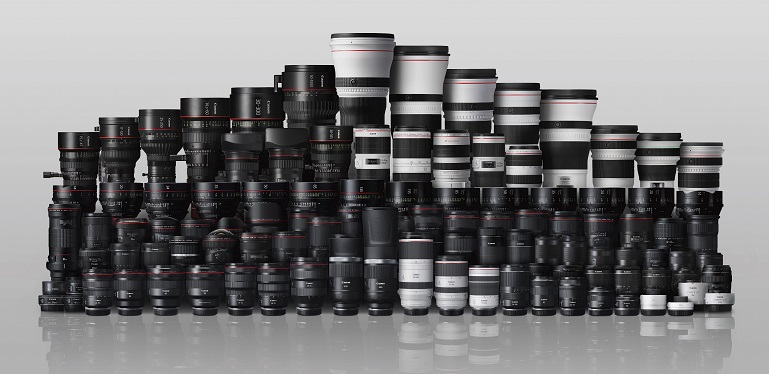
Aspherical lenses
Aspherical lenses are specially designed to suppresses aberrations, which are the bane of high image quality. Typical lenses consist of a combination of several spherical lens elements. Theoretically, however, spherical lenses are prone to a flaw called “spherical aberration,” a phenomenon in which light rays cannot fully converge to a single point.
Aspherical lenses were devised as an approach to mitigate such aberration. However, suppressing aberration was previously considered difficult in terms of engineering and precise measurement of the lens shape, to the extent that aspherical lenses were once called “dream lenses.”
Canon worked to quickly develop technology that would enable manufacture of aspherical lenses, and successfully produced the world’s first interchangeable lens with an aspherical lens element in the early 1970s.
 Spherical aberration of a spherical lens
Spherical aberration of a spherical lens
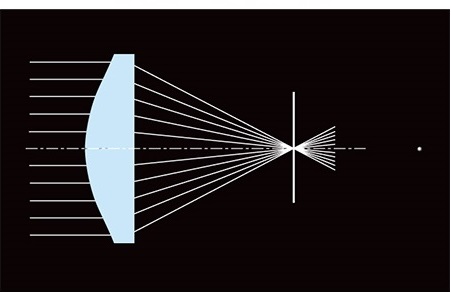 Matching focus with an aspherical surface
Matching focus with an aspherical surface
Fluorite lenses
Fluorite disperses minimal light, an attribute that earns its reputation as the ideal ore for canceling out chromatic aberrations such as color blurring and color shift. However, natural fluorite crystals are low in purity and small in size, precluding their use as a material for camera lenses.
Spurred by the idea of creating everything it needs in-house, Canon thus took up the challenge of developing technology to produce artificial fluorite crystals. In 1969, Canon launched the world’s first consumer-grade photography lens containing fluorite lens elements.

Fluorite lenses have several advantages over conventional optical lenses, such as
(1) A markedly lower refractive indextest
(2) Extremely low dispersiontest
(3) Good transparency in the infrared and ultraviolet regions, allowing the complete elimination of chromatic aberration.
UD lenses/Super UD lenses
Fluorite has exceptional optical characteristics, but Canon needed to develop glass materials with optical characteristics similar to those of fluorite in order to incorporate this technology into even more lenses. Thus, Canon has also developed ultra-low-dispersion (UD) lenses, which utilize optical glass with a low refractive index and low dispersion. This makes possible performance similar to fluorite when multiple lens elements are combined.
Canon has also successfully developed “Super UD” lenses with even greater performance than UD lenses. Super UD lenses have nearly the same characteristics as fluorite and are functionally equivalent to using two standard UD lenses. Therefore, they greatly help correct chromatic aberration while also making possible smaller lens bodies.

DO lenses
Canon’s unique diffractive optics (DO) lenses have a layer of jagged “saw-tooth” cuts arranged in extremely precise concentric circles to control the path of incident light. Instead of using light refraction, the lens compensates for various aberrations using “diffraction,” which occurs when light is blocked by an obstacle and it bends around the edges of that obstacle.
DO lenses produce chromatic aberrations in exactly the opposite manner as typical refractive lenses. Refraction using a conventional convex lens forms an image in the order of blue, green, and red light wavelengths. DO lens does the opposite, forming an image in the order of red, green, and blue. When used in conjunction, a conventional convex lens and a DO lens mutually cancel out and correct each other’s chromatic aberrations. This provides the exceptional imaging performance of a telephoto lens while also reducing the size and weight of the body.
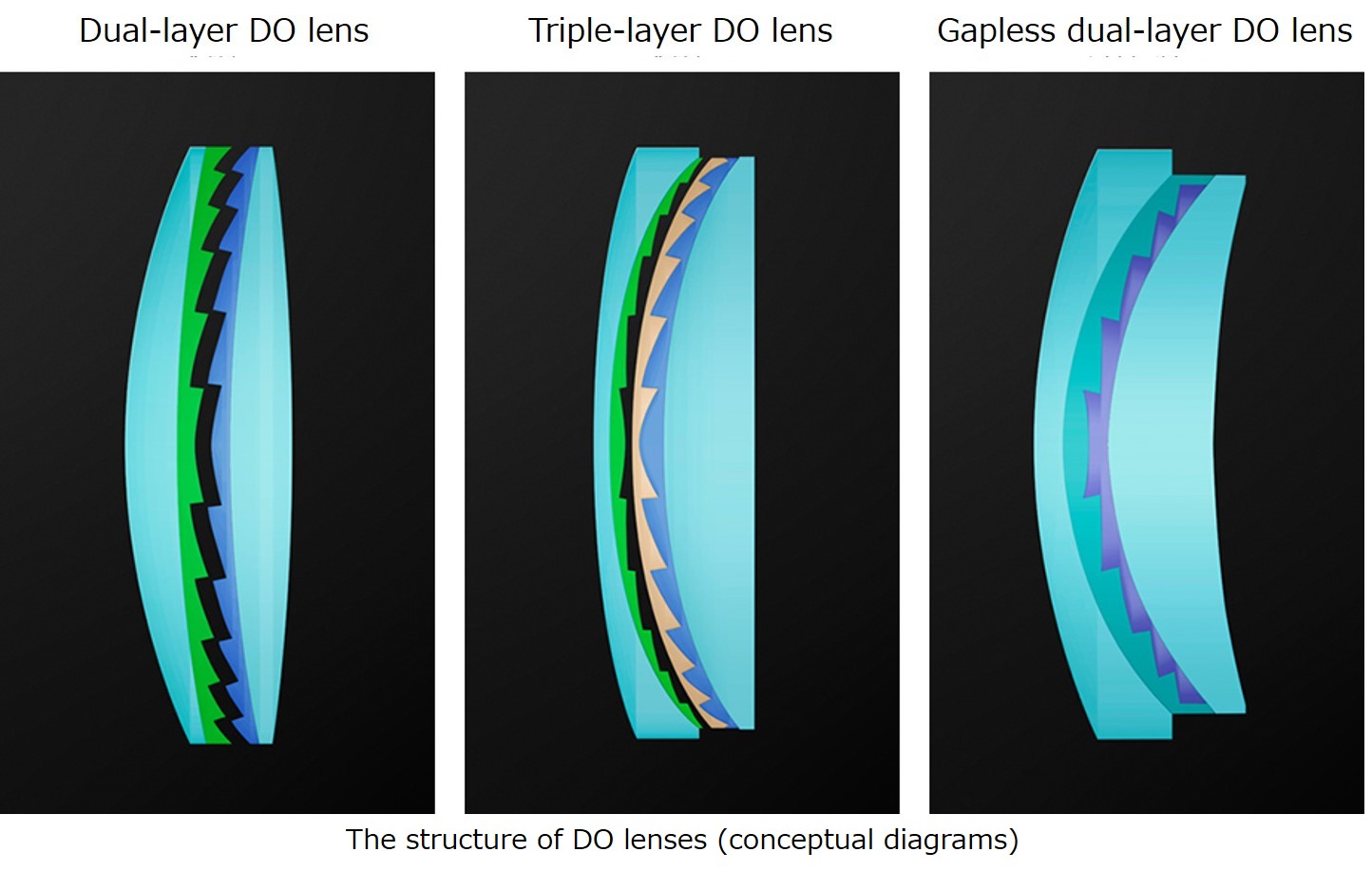
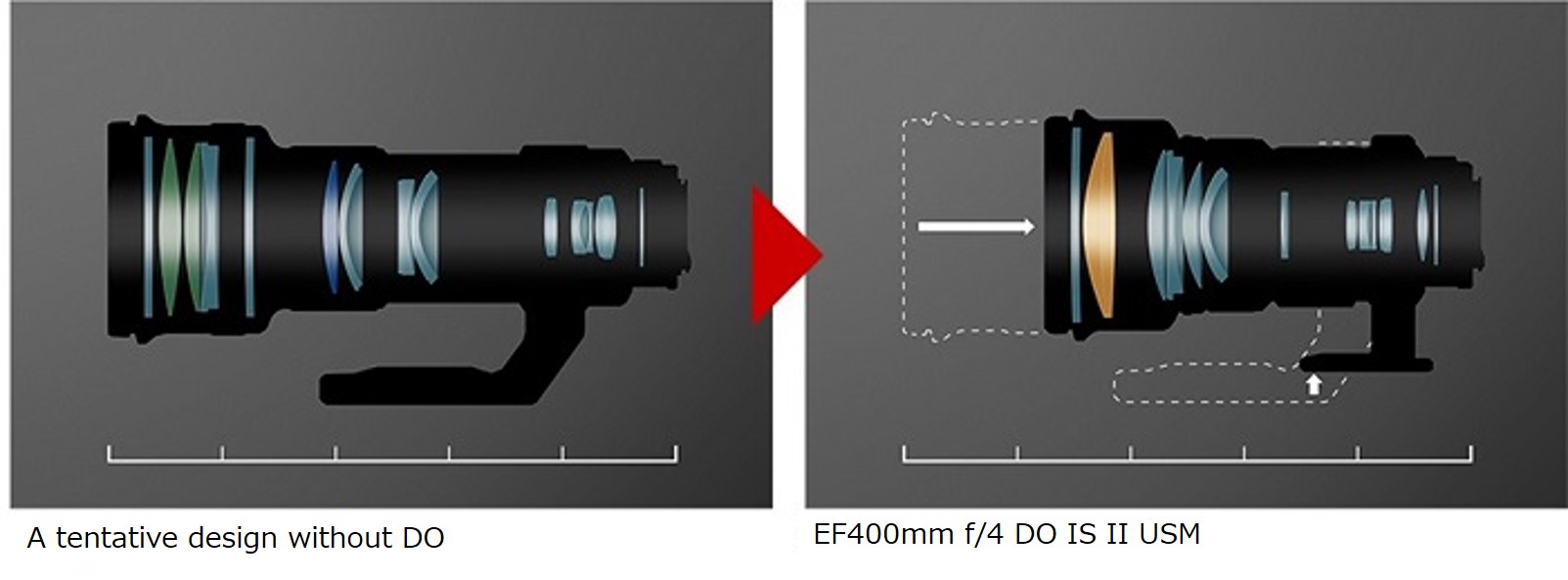
BR lenses
Chromatic aberration, which is the primary issue for lenses, has been corrected by developing fluorite lenses and UD lenses. Nevertheless, conventional approaches that use a large-aperture lenses with a fast f-stop numbers still struggle with both eliminating chromatic aberration and retaining compact and lightweight designs.
To solve this problem, Canon developed a blue spectrum refractive (BR) lens that uses a BR optical element to greatly refract blue light, which has the shortest wavelength. Other lens groups are allowed to produce a large amount of aberration for blue light wavelengths. This aberration is canceled out by the BR lens and its ability to greatly refract blue light, thus eliminating chromatic aberration.
Using a BR lens facilitates a greater degree of freedom in the design process and enables the use of other types of unique glass with various characteristics. This in turn allows a higher level of performance and a more compact lens body.

The blue component in the center is the BR element
Coating technologies: SWC/ASC
A subwavelength structure coating (SWC) is a technology that helps suppress light reflection by continuously changing the refractive index of the lens surface with countless nanometer-level spikes that are shorter than the wavelength of visible light.
This technology provides exceptional anti-reflective performance, even for light with a large angle of incidence. In addition, it greatly reduces flare and ghosting at the lens’ periphery.

Nano-sized spikes suppress reflection
Air sphere coating (ASC) is a technology that suppresses light reflection by forming a film comprising silicon dioxide and air on top of the vapor-deposited film on the lens surface. Air has a lower refractive index than optical glass. Thus, a film with an ultra-low refractive index can be formed by including a certain proportion of air in the coating. ASC is highly anti-reflective and greatly suppresses flare and ghosting, especially for incident light at near-vertical angles.

 Glass (uncoated)
Glass (uncoated)
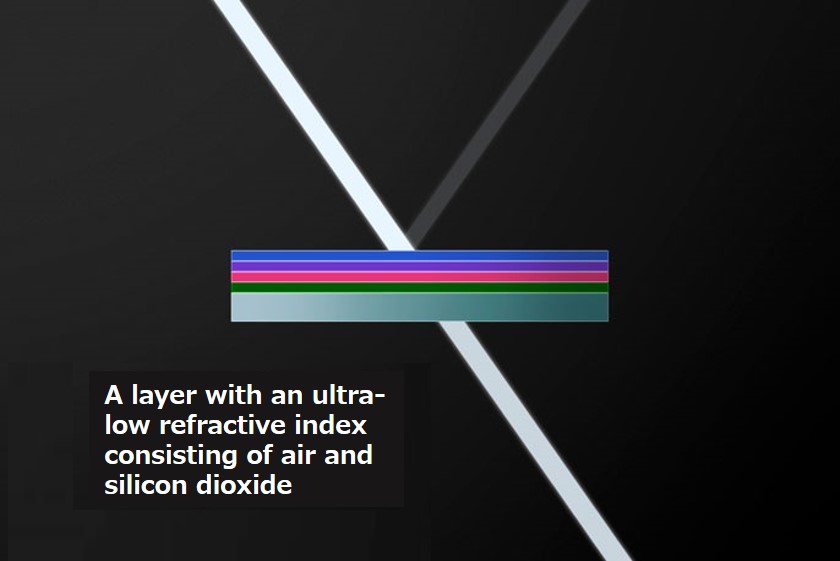 ASC (a layer with an ultra-low refractive index + a layer of vapor-deposited film)
ASC (a layer with an ultra-low refractive index + a layer of vapor-deposited film)
Nano USM
The nano ultrasonic motor (USM) is a small ultrasonic motor located inside an interchangeable lens that enables high-speed autofocusing.
Ultrasonic vibrations are transmitted to the slider, which moves the focusing lens along the optical axis to achieve high-speed autofocusing.
When shooting still images, the motor starts and stops with great responsiveness, allowing the camera to capture even fast-moving subjects with high speed and precision. Smooth movement while shooting video makes possible smooth autofocusing in accordance with a subject’s movement.

Nano USM
Image stabilization technology to compensate for tilt blurring
Canon’s in-lens optical image stabilizer (IS), the world’s first in-lens IS for interchangeable lenses, employs a vibration-detecting gyro sensor that detects camera shake and is activated by a half-press of the shutter release button. This technology corrects for “tilt blurring,” which refers to the movement of the lens around the camera axis, by moving the IS in conjunction with the amount of shaking.

Tilt blurring
The camera optically corrects for shaking in real time, so the correction can be confirmed while looking through the viewfinder. The actual image in the viewfinder is not blurred, thus allowing the photographer to frame and focus the camera as desired.
Hybrid IS technology corrects even “shift blurring”
In addition to tilt blurring, Canon’s new hybrid IS technology corrects for shift blurring, which is common in macro photography. Lenses using this technology are newly equipped with an acceleration sensor mounted inside the lens. Along with a conventional gyro sensor, the acceleration sensor detects camera movement in three dimensions and calculates the amount of camera shaking. This technology helps the IS operate more accurately.
 Shift blurring
Shift blurring
RF mount

The RF mount is a specification for interchangeable lenses devised by Canon in anticipation of future advances in mirrorless cameras. For “large-diameter” lenses, the RF mount has an internal diameter of 54 mm. The mount also features a “short back focus,” meaning that the CMOS sensor and the rear of the lens are positioned closer together. This allows for greater freedom in optical design and opens up possibilities for a new era of visual expression and increased optical performance without increasing the size of lens bodies.
Moreover, the RF mount features a new “mount communication system” which, compared to Canon’s EF mount, greatly improves the amount of information that can be transmitted and how quickly it can be sent. The system makes possible instantaneous communication of information collected through the lens and sent to the camera, such as focus, zoom, aperture, image stabilization, and various aberrations.





